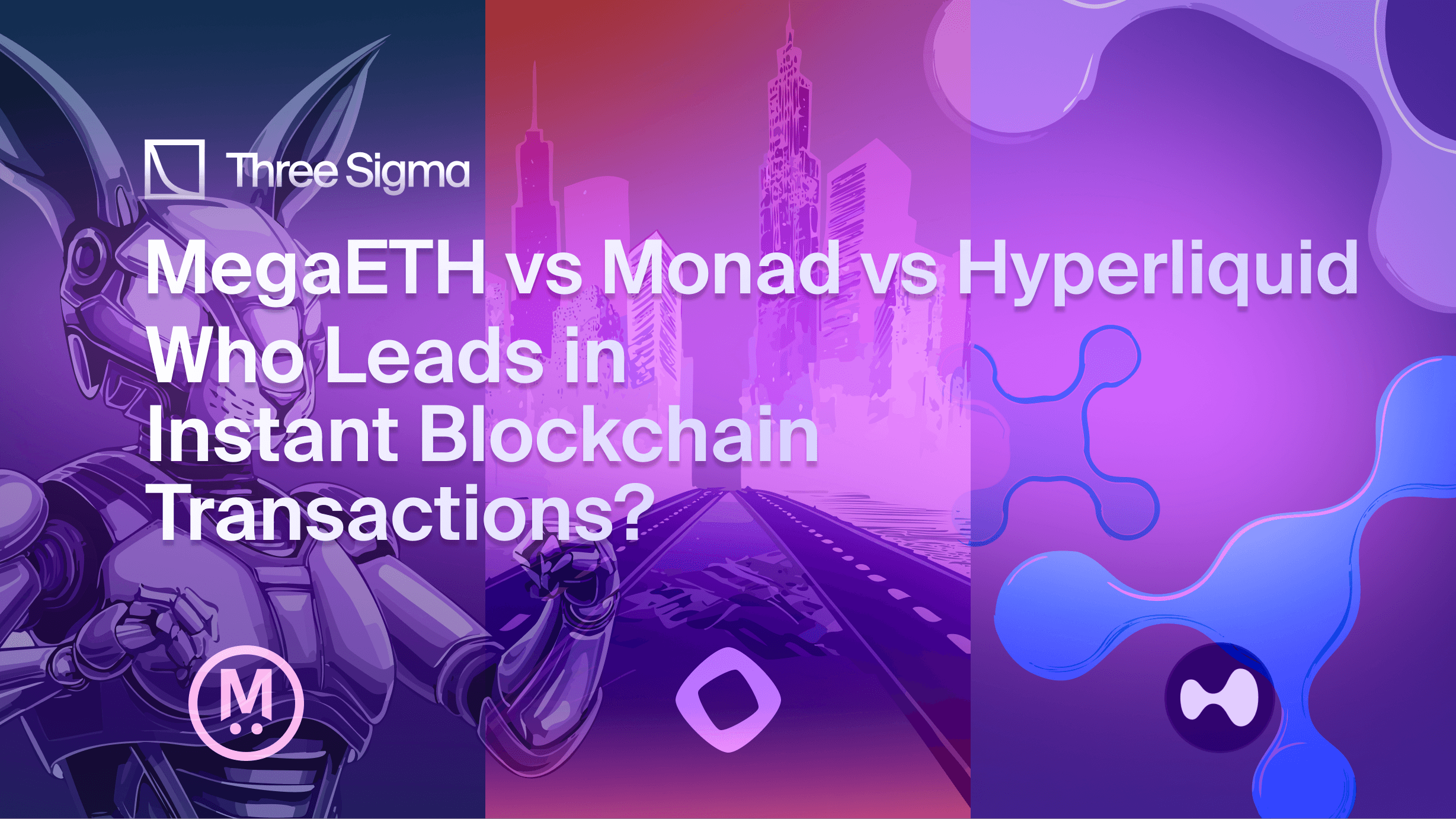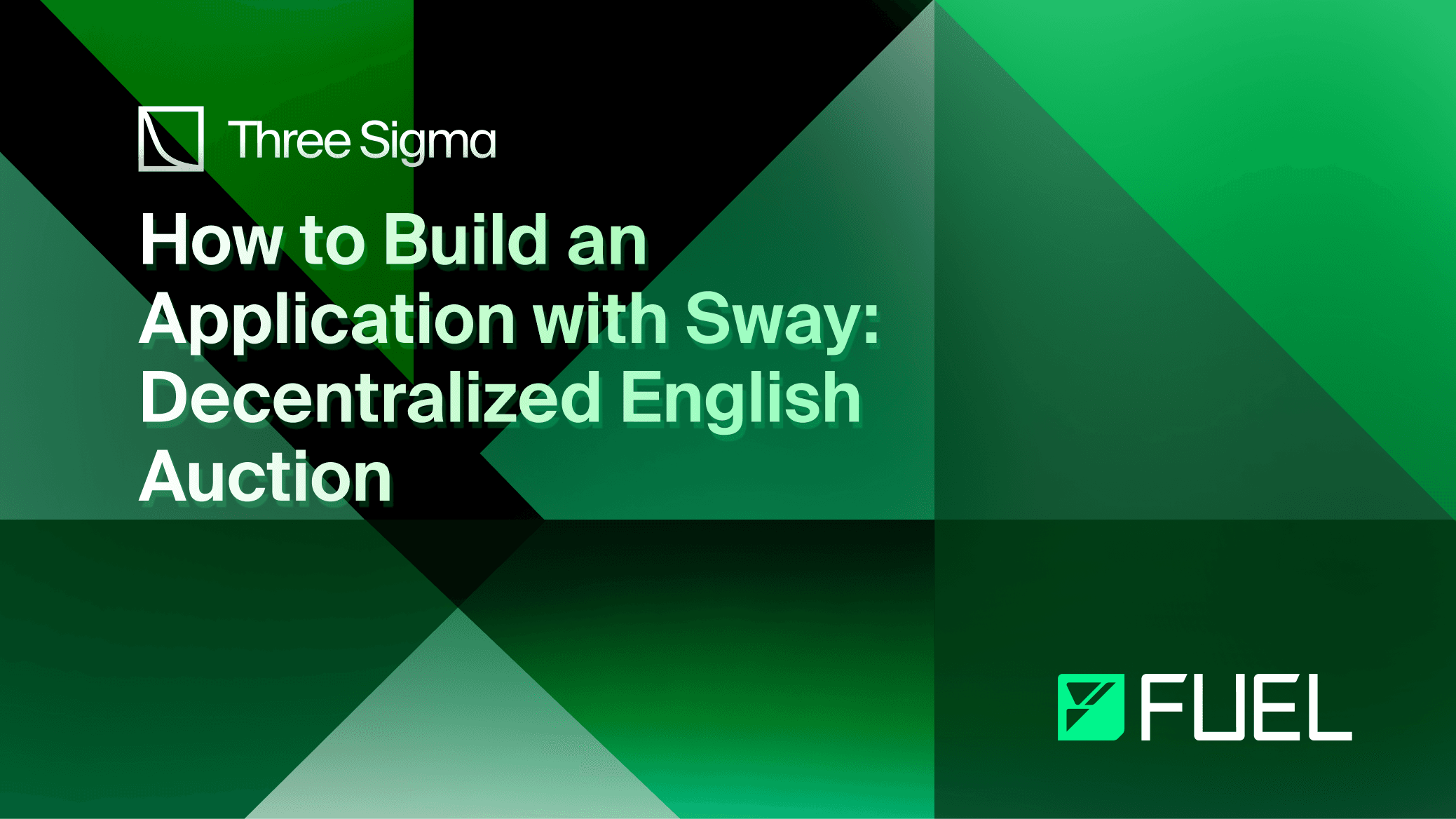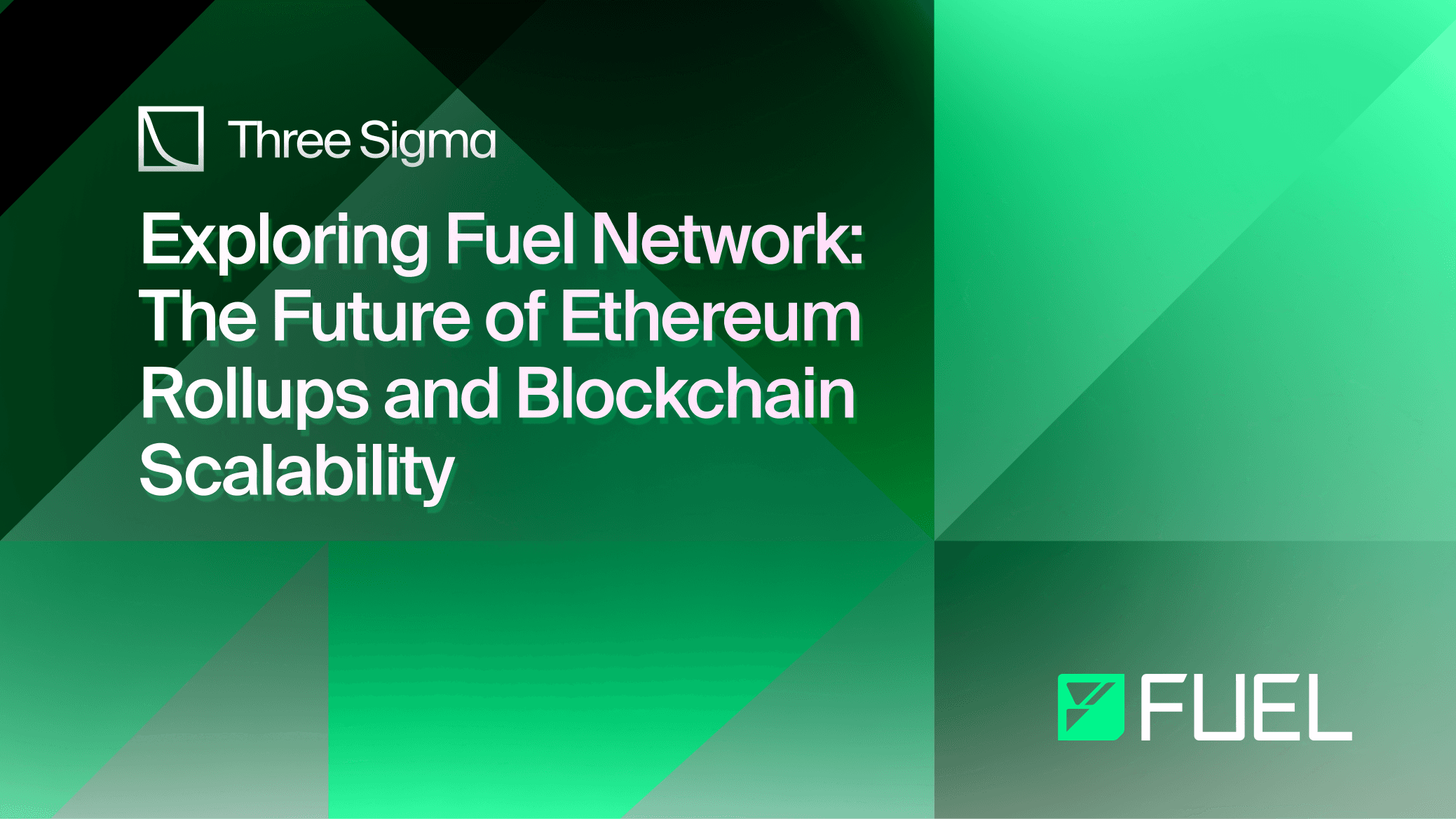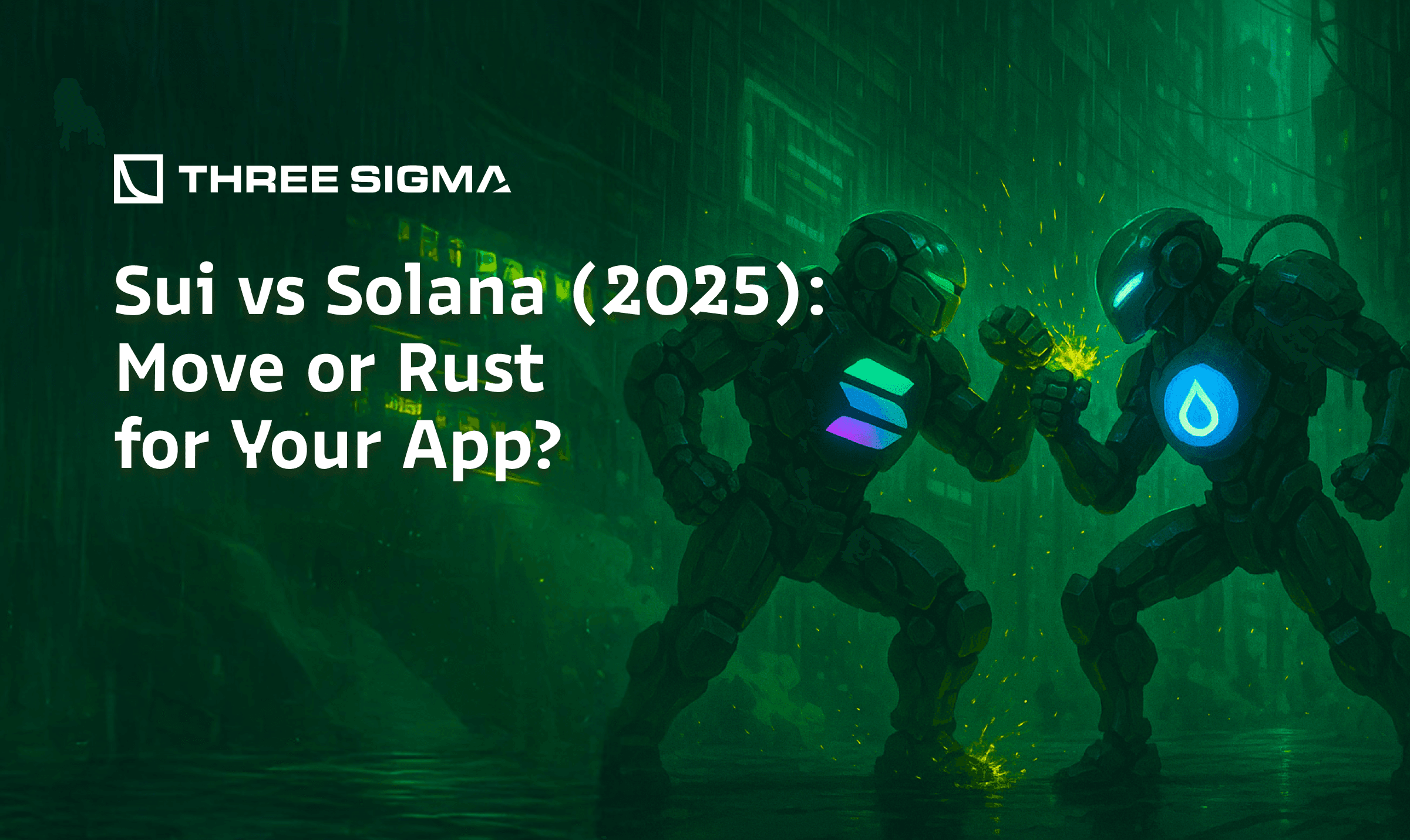Introduction
In the ever-evolving blockchain landscape, instant transactions are becoming a necessity, not a luxury. As decentralized finance applications, payments, gaming, and high-frequency trading push the boundaries of traditional blockchain capabilities, the need for real-time performance has never been greater. Among the contenders competing to redefine transaction speed and scalability are MegaETH, Monad, and Hyperliquid. As we have seen in the past article, MegaETH, a rising Layer 2 solution built to prioritize real-time performance, has captured attention with its promise of near-instantaneous block times and high transaction throughput. However, Hyperliquid and Monad, with their distinct approaches to optimizing blockchain performance, pose strong competition. This article dives deep into the strengths, architectures, and trade-offs of these solutions to understand who might lead the race for instant blockchain transactions. For teams designing new chains or rollups, our Blockchain Protocol Audits validate performance assumptions under adversarial conditions.

MegaETH Overview
@megaeth_labs is a Layer 2 scaling solution designed for Ethereum. What differentiates MegaETH is its focus on real-time blockchain performance, enabling ultra-low latency and scalability for applications requiring immediate responsiveness. This is an environment where rigorous Solidity Audits pay off.

Key Takeaways
- Latency and Speed: MegaETH boasts block times between 1 and 10 milliseconds, allowing it to process up to 100,000 transactions per second (TPS).
- Specialized Nodes: It uses a sequencer-centric model with specialized roles for nodes (sequencers, provers, and full nodes), streamlining execution and reducing redundancies.
- Integration with EigenDA: MegaETH leverages EigenDA for data availability, enabling it to scale without compromising reliability or performance.
Advantages
MegaETH’s architecture is tailored for speed and efficiency, making it stand out in the competitive L2 landscape:
- Low Latency: Its near-instant transaction processing is ideal for high-frequency trading, gaming, and payment systems.
- Scalability: By processing blocks in milliseconds, MegaETH avoids congestion issues that often plague other L2 solutions during peak demand.
- EVM Compatibility: Fully compatible with Ethereum’s ecosystem, enabling seamless integration with existing dApps while preserving security.
MegaETH vs Monad & Hyperliquid
While MegaETH focuses on real-time performance, it faces stiff competition from Hyperliquid and Monad, two platforms with distinct approaches to optimizing blockchain transactions.

@HyperliquidX operates as a fully on-chain perpetual trading protocol built on its own Layer 1 (L1) blockchain, optimized for low latency and high throughput. By integrating spot, derivatives, and prelaunch markets into its platform, Hyperliquid introduces HyperBFT, a high-performance consensus mechanism, and plans for HyperEVM, designed to expand its ecosystem with efficient liquidity aggregation.
- Vision: Hyperliquid is focused on redefining trading experiences by providing high-speed, decentralized market infrastructure. This makes it particularly appealing to financial institutions and high-volume traders.
- Market Specialization: Its unique combination of spot and perpetual markets enables seamless liquidity aggregation and rapid settlement.
Hyperliquid’s stack incorporates a broader range of financial primitives like borrowing, lending, governance, and native stablecoins. Built on its HyperBFT consensus, Hyperliquid achieves 0.2-second block times while maintaining a unified state across all components, ensuring performance, liquidity, and programmability. With over 262,000 users and handling 200,000 transactions per second, it’s clear that Hyperliquid is positioning itself as a leader in decentralized market infrastructure.To further extend its influence, Hyperliquid offers Builder Codes, a feature that allows other dApps and centralized exchanges (CEXs) to integrate its liquidity seamlessly by paying fees per trade. Builder Codes not only expand Hyperliquid’s reach but also incentivize external platforms to leverage its high-performance trading infrastructure, enhancing liquidity and broadening its network effects.

@monad_xyz reengineers the EVM architecture to achieve unparalleled throughput through parallel execution. By addressing the limitations of Ethereum's sequential transaction processing, Monad unlocks new levels of efficiency and scalability.
- Vision: Monad is designed to deliver cutting-edge blockchain performance while preserving decentralization, setting a new standard for Layer 1 scalability.
- Parallel Execution: Monad's architecture enables concurrent processing of transactions across multiple EVM instances, ensuring seamless integration with existing user and developer workflows.
- Full Compatibility: Maintaining complete bytecode compatibility with Ethereum, Monad integrates state-of-the-art internal optimizations without altering the development experience.
Monad introduces pipelining to optimize transaction execution, consensus processes, and state synchronization, maximizing hardware efficiency and minimizing latency. Leveraging a customized MonadBFT consensus mechanism derived from HotStuff, the protocol supports a robust and decentralized validator set while achieving rapid block finality.Key innovations include MonadDB, a purpose-built database tailored for Ethereum state access, and optimistic parallel execution, which ensures high throughput with minimal overhead. Monad’s separation of consensus and execution layers further enhances scalability, enabling developers to build applications that demand both exceptional performance and low latency.Monad’s groundbreaking advancements make it a powerful platform for enterprise-grade applications, offering developers the tools to create high-throughput decentralized applications (dApps) while preserving Ethereum compatibility and embracing the future of blockchain innovation.
Comparison

Evaluating MegaETH, Hyperliquid, and Monad across critical metrics provides a comprehensive understanding of their unique strengths and trade-offs. For this comparison, we focus on latency, throughput (TPS), EVM compatibility, use cases, time to finality (TTF), and decentralization trade-offs. These are areas where a comprehensive Economic Audit can pressure-test before launch. These features highlight the fundamental requirements for scaling blockchain infrastructure while ensuring real-world utility and performance.

Latency:
- MegaETH excels in ultra-low latency (1-10 ms) for Layer 2 transactions, making it suitable for applications requiring near-instantaneous response times, such as high-frequency trading or competitive gaming.
- Hyperliquid’s sub-second latency is optimized for financial markets, enabling fast order execution and seamless trading experiences.
- Monad’s parallelized low-latency execution ensures consistent performance, even under heavy network load, supporting diverse decentralized applications (dApps). The team has not made a time claim.
Throughput (TPS):
- MegaETH’s throughput exceeds 100,000 TPS, emphasizing scalability for large-scale applications.
- Hyperliquid achieves up to 200,000 TPS, leveraging its proprietary HyperBFT consensus and Layer 1 optimization.
- Monad, with a maximum of 10,000 TPS, focuses on balancing high performance with decentralization.
EVM Compatibility:
- MegaETH’s full EVM compatibility ensures seamless onboarding for developers and existing dApps.
- Hyperliquid integrates HyperEVM, a customized version tailored for financial market use cases.
- Monad’s reengineered EVM supports high-performance execution while maintaining compatibility with Ethereum tools and standards.
Use Cases:
- MegaETH targets gaming, trading, and payment systems, emphasizing real-time interactions and high scalability.
- Hyperliquid is specialized in financial markets, offering robust infrastructure for derivatives, spot trading, and market-making.
- Monad’s versatility supports a wide array of dApps, particularly those requiring high throughput and low latency.
Time to Finality (TTF):
- MegaETH Layer 2 transactions achieve near-instantaneous finality (10 ms), but full settlement on Ethereum L1 takes approximately 7 days.
- Hyperliquid’s 1-2 second TTF balances low latency with robust consensus mechanisms.
- Monad finalizes transactions within 1 second, providing a practical blend of speed and security.
Trade-offs in Decentralization:
- MegaETH’s centralized sequencer design sacrifices some decentralization to achieve real-time performance at the Layer 2 level.
- Hyperliquid’s market-focused architecture prioritizes low latency and high throughput over decentralization.
- Monad’s design strives to maintain a balance, leveraging parallel execution and deferred state updates to optimize both performance and decentralization.
Conclusion
MegaETH, Hyperliquid, and Monad each bring unique innovations to the blockchain ecosystem, catering to different needs:
- MegaETH: Excels in latency and TPS, making it ideal for real-time applications but it raises questions about decentralization due to its centralized sequencer design.
- Hyperliquid: Shines in financial markets with its HyperEVM and liquidity integration but is less versatile than MegaETH in other dApp categories.
- Monad: Offers a balance of decentralization and performance, leveraging parallel execution to improve TPS and support various applications.
Who Leads?
The answer depends on the use case:
- For trading and liquidity, Hyperliquid is a strong contender with its specialized financial focus.
- For general dApp scalability, MegaETH leads with its real-time performance and broader application range.
- For decentralized high-throughput applications, Monad’s parallelized EVM offers a compelling option for developers prioritizing decentralization.
Key Observations:
MegaETH, Hyperliquid, and Monad each bring unique innovations to the blockchain ecosystem, catering to different needs:
1. MegaETH: Excels in latency and TPS, making it ideal for real-time applications but it raises questions about decentralization due to its centralized sequencer design.
2. Hyperliquid: Shines in financial markets with its HyperEVM and liquidity integration but is less versatile than MegaETH in other dApp categories.
3. Monad: Offers a balance of decentralization and performance, leveraging parallel execution to improve TPS and support various applications. If governance, validator incentives, or voting mechanics are central to your roadmap, consider a DAO Audit to harden decision-making and minimize capture risks.

The competition between MegaETH, Hyperliquid, and Monad highlights a critical aspect of blockchain evolution: at the moment, no single solution can dominate every use case. Each platform excels in its domain, offering unique value propositions that cater to diverse needs. For developers and enterprises, the decision often boils down to the specific application requirements, whether it’s unmatched speed, market liquidity, or decentralized scalability.
These projects also underline the importance of continuous innovation in blockchain infrastructure. As adoption grows, the industry must reconcile the scalability trilemma with user expectations of low fees, high performance, and robust security. Collaborative advancements, like integrating solutions from different ecosystems, could drive the next wave of blockchain breakthroughs. As blockchain technology evolves, these platforms push the boundaries of what’s possible, paving the way for faster, scalable, and efficient decentralized systems.
Ultimately, the choice depends on the priorities of developers and users: speed, decentralization, or specialization.
Want to know more? Our blog is packed with guides on key industry topics you don’t want to miss.






